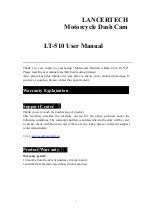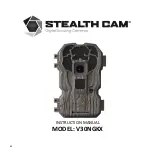
V1.02
Thom Hogan’s Complete Guide to the Nikon D300
Page 25
D300 Background
In this section we’ll look at the D300
specifications, how it differs from previous Nikon
DSLRs, and how to set up your camera.
We’ll also look at how the D300 is powered,
how images are stored, and spend time looking
closely at the sensor that does the primary work.
The D300’s History
The Nikon D300 was announced in August 2007 along with
the D3. While the D3 was widely anticipated, the D300 was
a surprise addition to Nikon’s lineup; a replacement for the
D200 wasn’t expected so soon, or with so many changes.
Indeed, on paper the D300 also looked like it bested the
D2xs, which was an even bigger surprise. Actual shipments of
the D300 began in November 2007.
The
x
00 models in the Nikon DSLR lineup are prosumer
models. These cameras appeal to serious amateurs who want
a highly competent camera at a modest price, and to
professionals who need a smaller, yet still highly competent
camera.
Historically, here’s the basic lineage that lead to the D300:
N8008
N90
F100
D100
D200
D300
The common aspects to all these models are a high quality
build that stands up to abuse, features that nearly duplicate
Nikon’s highest end cameras, and a modest price, all
wrapped in a body that’s smaller and doesn’t have a built-in
vertical grip.
As I noted, the D300 was a surprise announcement.
Historically, the delay between each generation of Nikon’s
prosumer camera has been long, like that of the full-on pro
















































